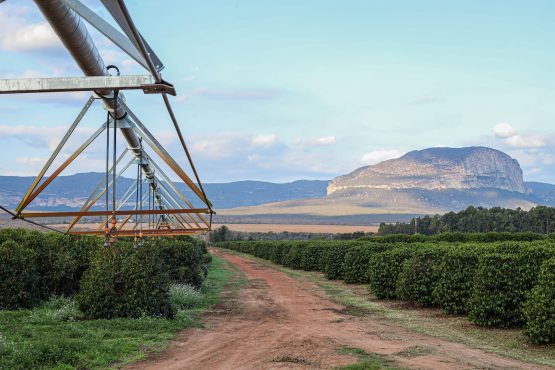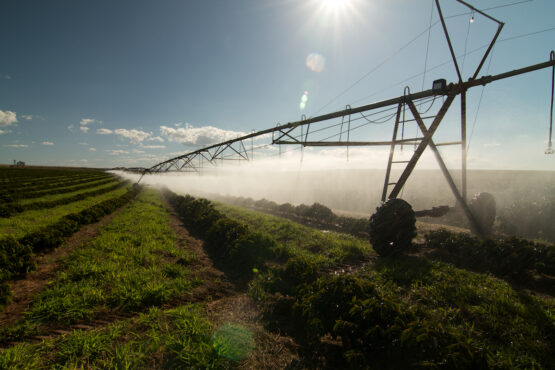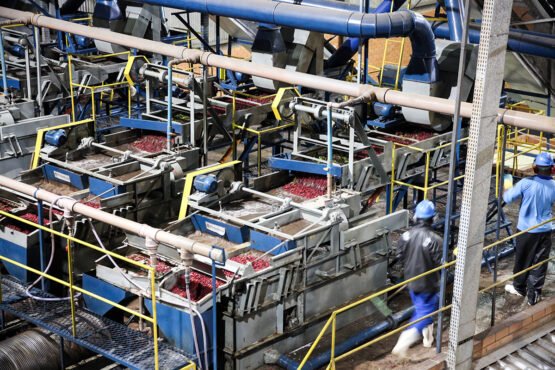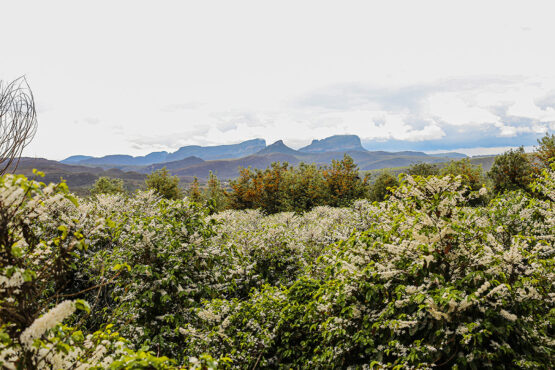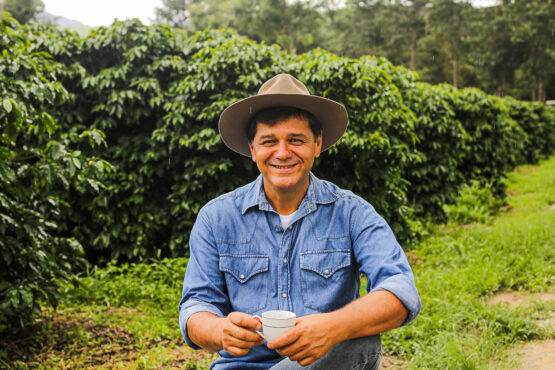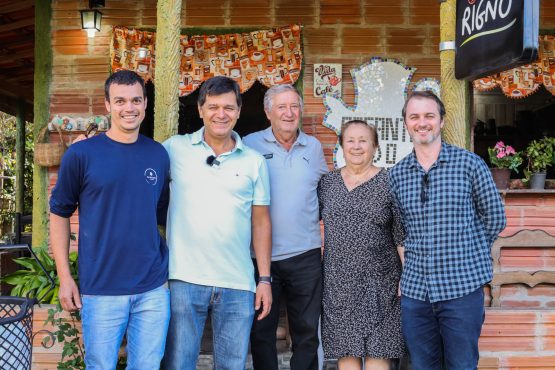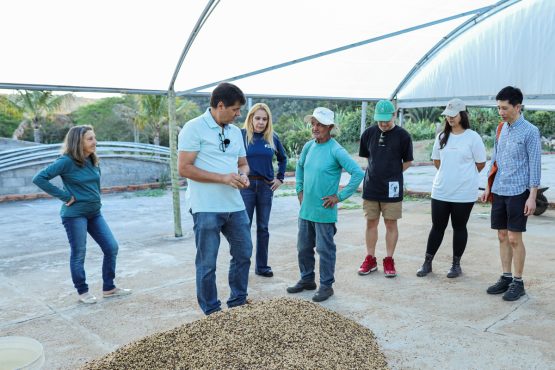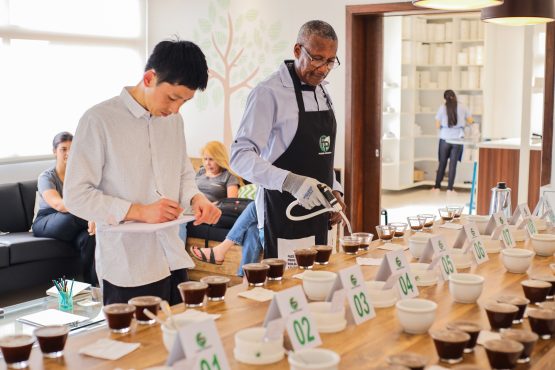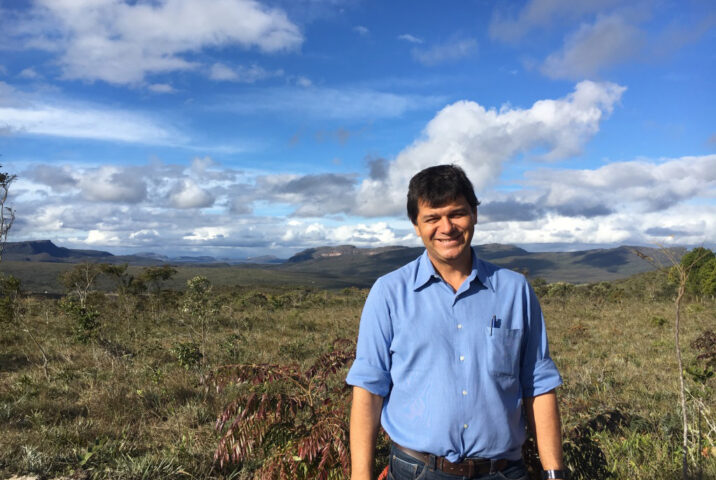Brazil
Over the last couple of decades, some very focused, quality-conscious coffee growers have emerged in Brazil, and they are dedicated to specialty coffee. We actively seek out these producers and work to build long-term, sustainable relationships with them.
Brazil is the world’s largest coffee producer, supplying around a third of the world’s coffee. Over two million hectares of Brazilian land are dedicated to coffee, producing an average of 43 million bags of coffee a year, of which at least 70% is Arabica. These numbers are staggering, yet they make perfect sense when you consider that 22% of the planet’s cultivable land is found in Brazil: it is the number one crop producer in the world, and the fourth largest food producer.
Coffee farms in Brazil range in size from small family-run plantations of less than ten hectares, to large estates in excess of 2,000. To put their scale in perspective, many of the bigger farms in Brazil produce more coffee annually than Bolivia does as an entire nation. One of the things that separates Brazil from other producing nations is the flat terrain found in many coffee-growing regions, which allows for large, uninterrupted plots of land to be dedicated to coffee farming. This means that many aspects of the production process (such as picking and irrigation) can be mechanised, which has both helped increase coffee farmers’ potential to produce great coffee and been at odds with it.
History of Coffee in Brazil
Coffee was introduced to northern Brazil from French Guiana in the late 18th century, with the first coffee plantation established in Rio De Janeiro in 1770. Over the following decades, plantations spread throughout the country’s northern and the southern regions, building Brazil’s coffee production from less than 1 tonne in 1800, to over 5,500 in 1820! During the 19th century, as disease ravaged through Asia’s coffee regions, immigrant workers began joining the Brazilian coffee industry and the country’s agriculture sector became industrialised, setting the stage for Brazil to become the world’s largest coffee producer – a position it still holds.
The 20th century brought difficulties to Brazilian coffee growers, as worldwide supply began to outstrip demand and coffee prices began to fall. In an attempt to ameliorate the situation, the Brazilian government committed to buying all of the country’s coffee and keeping it off the market until prices stabilised. Things came to a head during the Great Depression of 1929, when the price of coffee plummeted by 90%, decimating the country’s economy.
The Brazilian government then took the drastic step of destroying millions of stockpile bags of coffee, either by setting it them fire or by dumping them into the ocean, with the hopes the drop in supply would restore the value of Brazilian coffee. Though it failed at this, the strategy did raise awareness to the need for regulation of coffee prices. This came in the form of the International Coffee Agreement (ICA), which aimed at placing and maintaining yearly quotas on exporting countries, while keeping prices high and stable in the market. The ICA was successful at stabilising prices, yet it did little to raise the quality of the coffee being produced. Eventually, after nearly 30 years of focusing on meeting their prescribed allocations rather than on improving quality and innovation, Brazil left the ICA and the Brazilian Specialty Coffee Association (BSCA) was formed – tasked with transforming the country into a producer of exceptional coffee.
To find, promote and recognise their country’s quality coffees, Brazil pioneered the juried Cup of Excellence competition. The first competition, which was originally called ‘The Best of Brazil,’ was held in 1999. The purpose of the Cup of Excellence program was to promote traceability and direct trade, and to discover and reward quality in Brazil. The success of the first program demonstrated that the market was willing to pay more than double the commodity price for quality coffee. This has led to advancements in the selecting, sorting and processing of coffee, and the discovery of new coffee-growing regions, which have incredible potential for quality.
Harvesting and Processing Coffee in Brazil
The industrialisation of the early 20th century brought technological innovations to many Brazilian farms, particularly in harvesting and processing techniques, transforming it into the most advanced and modernised coffee-producing nation in the world. There are three main ways that coffee is harvested in Brazil:
- Selective hand picking: ripe cherries are selectively picked. With this method, several passes are made during the harvest to ensure only the ripest cherries are selected each time. This is the most labour intensive and costly method of picking.
- Strip picking: the branches of the tree are completely stripped of the cherries, regardless of their ripeness. Often they are collected on large plastic sheets, which are laid on the ground to collect the cherries.
- Mechanical harvesting: the tree is shaken using a mechanical harvester to remove the cherries from the branches.
Both strip picking and mechanical harvesting require the sorting of the coffee cherries to happen at the wet mill and dry mill, using machinery and the latest technology to help sort the coffee. These methods have become more popular in recent years as the cost of labour in Brazil has increased.
Most of the coffee we source from Brazil is selectively hand-picked. This is often due to the fact that the coffee farms we work with are at higher altitudes and tend to have more mountainous terrain (making mechanical harvesting impossible). In other instances, the producer may have made a conscious choice to hand select their coffee cherries, so as to ensure that only the very ripest cherries are selected.
Historically, most coffee in Brazil has been processed using the natural method, due to water scarcity in the early coffee-growing regions. This processing method was notoriously inconsistent and subject to processing defects, such as over-fermentation. In the 1990s, the pulped natural processing method was introduced, and this method has been increasingly employed by producers, along with the washed method. When done well, with an eye to quality selection and separating, all processing methods have the potential to bring out unique and delicious characteristics in the coffee.
Key Regions That We Work In
Coffee is produced in 14 different regions in Brazil, spread across seven states. Of these, five are in the country’s south, Espirito Santos, Minas Gerais, Sao Paulo, Parana and Rio de Janeiro; while the other two, Bahia and Rondonia (who only grow Robusta), are in the north. All of the Brazilian coffees we source come from Bahia.
BAHIA
Brazil’s fifth largest state, Bahia is located in the northeast of the country, 1,000km from the coastline, and is characterised by its high altitudes and warm climate. Here, we source from the Chapada Diamantina region, a 38,000km2 mountain range that encompasses a total of 58 municipalities and a multitude of towns. The terrain here is rugged and unique, and it harbours a great deal of biodiversity that cannot be found anywhere else in the planet.
The Chapada Diamantina region is also home to a stunning national park and mountain range of the same name. Two hours south of the national park is the town if Mucugê, where we work with the Borré family of Fazenda Progresso. Coffees here grow at 1,150 -1,200m above sea level, and tend to be big-bodied and rich in flavour, as they are selected for their suitability to work as blending components.
A further ninety minutes southwest of Mucugê is the town of Piatã, where we source coffee from many small coffee producers. Piatã coffees are well known to specialty coffee buyers, as they regularly perform well in the country’s Cup of Excellence awards – most notably in 2016, when it contributed an extraordinary 19 of the 24 coffees in the Pulped Natural competition!
Coffees in this region grows at elevations of 1,300-1,400m above sea level (which is very high for Brazil), and experience temperatures that vary from 2°C to 18°C in the winter. The coffees grown here are limited, due to the small scale of the farms in this region, but incredibly distinct and special. The cup profile of lots from this region is very bright, floral, transparent and complex – quite different from the coffees we source elsewhere in Brazil.
Our Supply Partners
In Brazil we work very closely with Silvio Leite, a dear friend, coffee mentor and exporter. As one of the founders of the Cup of Excellence program, he has a deep understanding of Brazilian coffee and an exceptional palate, and he helps us source the very best coffees that Brazil has to offer. Via Silvio, we have been able to partner with a number of producers that we have come to trust fully, as they share our values of quality and sustainability. We have built meaningful and mutually beneficial long-term relationships with each of them and have worked together with them to build a market for their coffees.
In Bahia, we work with several award-winnng farms, including São Judas Tadeu , Sitio Canaã and Cafundó. These high-altitude farms are tiny and quality-focused, and produce exceptional coffees. These coffees are extremely limited and hard to come across as they are considered some of the best in Brazil by specialty coffee buyers.
Here, we also work very closely with Fabiano Borré from Fazenda Progresso. We source numerous lots from his farm, including exceptional microlots like Airumá and Sincorá, and large volume lines that are suitable for blending. They are all selectively hand-picked and processed with great care and precision, which helps maintain coffees fresh and vibrant all year round.

